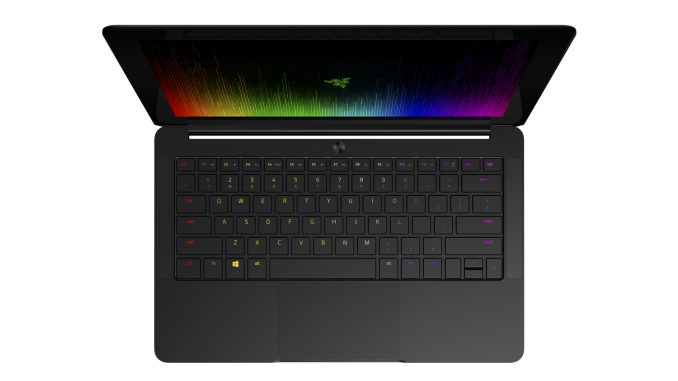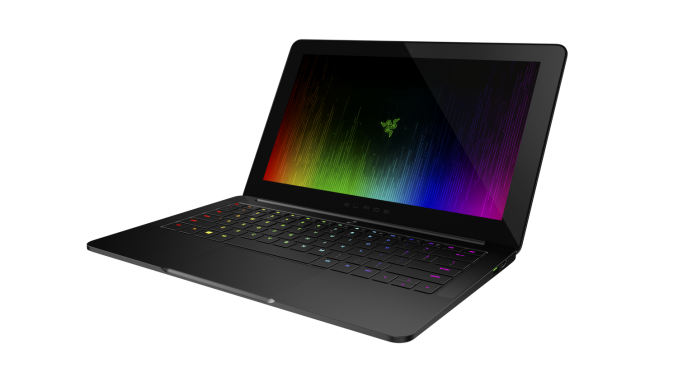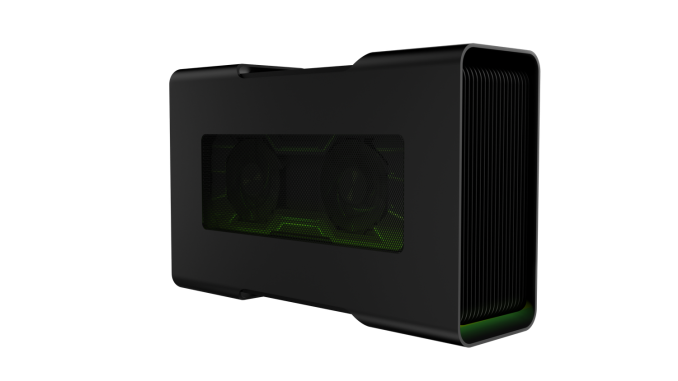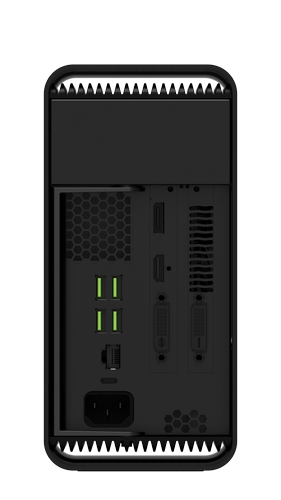Razer Launches The Razer Blade Stealth Ultrabook And Razer Core At CES 2016
by Brett Howse on January 6, 2016 9:01 AM EST- Posted in
- Laptops
- Razer
- Trade Shows
- CES 2016
- Razer Blade Stealth

Today we have some news that is kind of unexpected. Razer, the company known for gaming peripherals and gaming laptops such as the Razer Blade, has decided to enter the Ultrabook market with the launch of the Razer Blade Stealth. Not only is an Ultrabook not something expected from Razer, it is also priced very competitively and undercuts the competition on price.
Razer did not cut any corners either when designing the Stealth. Just like it’s more powerful and higher priced siblings, it is built out of a CNC-milled aluminum chassis, which is a designing feature of Razer laptops. But despite the solid frame, the laptop is still only 0.52-inches thick and weighs in at just 2.75 lbs. On the styling front, it keeps the black finish of other Razer laptops, but also outdoes them with a full “Chroma” keyboard with individually lit RGB keys. I’ve been hoping that they would do this for a while when reviewing the Razer Blade, so it’s great to see the RGB keyboard come to the Stealth model.
The 12.5-inch display comes in two options. The base model is a QHD (2560x1440) resolution, but you can also opt for a UHD (3840x2160) model with full Adobe RGB color gamut. I need to check in with Razer on how they are going to handle the wider color gamut, and will let you know after we get some hands-on time on the show floor.
The Stealth, as an Ultrabook, is going to be powered by Ultrabook class components, which in this case is the Intel Core i7-6500U processor. This Skylake chip features two cores, hyperthreading, and a base/turbo frequency of 2.5 GHz / 3.1 GHz. I was hoping that Razer would also offer a model with Intel’s Iris GPU, but that won’t be the case, at least at launch. The only memory option is 8 GB of LPDDR3-1866, and storage options range from 128 GB to 256 GB of PCIe storage on the QHD model, and 256 GB to 512 GB on the UHD model. The battery life will need to be tested, but the laptop has a 45 Wh battery, so it’s not going to be class leading in that regard.
For connectivity, the Stealth will have two USB 3.0 ports, and a USB 3.1 Type-C connector with Thunderbolt 3 support. The Thunderbolt is a key component to the Stealth, thanks to the accessory that Razer is also launching.
The Razer Core is a Thunderbolt 3 connected external GPU, which also acts as a docking station for the Stealth. With a single cable connection, the laptop can power an external display, all of the docking connections with four USB 3.0 ports and Gigabit Ethernet, and support for a 375W GPU.
The Core features a built-in 500W power supply, and the GPU support is for any single card which is full-length and double-wide, which means pretty much any GPU out there. The Core also features two additional Chroma lighting zones so that you can tailor it to your liking.
Razer has not yet announced any updates to the Razer Blade or Razer Blade Pro, but I would expect that both of these will also feature support for the Core when they do get their next refresh.
The Core supports plug and play with validated graphics cards, without the need to reboot.
The addition of the Razer Core brings back some of the gaming performance that Razer has been known for, although with a U series CPU it will be interesting to see what level of GPU is required to become CPU bound, especially with DX 12. If we can track down a review unit, we’ll try to sort that out.
The Razer Blade Stealth will be on-sale starting today, with a starting price of just $999. Considering the high resolution panel and Core i7, this undercuts most, if not all, of the Ultrabook competition on price. The top end 4K model with the UHD display and 512 GB of storage will be $1599.
Source: Razer















84 Comments
View All Comments
platinumjsi - Wednesday, January 6, 2016 - link
Interested to see socres on this, will the 4x PCI-Link to the CPU hamper it? will it get better performance on a external screen as thats going GPU - Screen rather than GPU to laptop screen?DanNeely - Wednesday, January 6, 2016 - link
It's generally minimal. The most recent results I found were Tech Power Up testing 18 games with a GTX 980 a bit over a year ago. The average impact from 4x PCIe3 lanes was 4-6% at normal resolutions. Only 2 games - Wolfenstien: New Order and Ryse - suffered badly enough (10-30% depending on resolution) that you might need to turn settings down significantly to keep acceptable FPS. 4 lanes only being problematic for a handful of titles has been the pattern I've seen since the first tests were done on PCIe 1.0 systems many years ago.https://www.techpowerup.com/reviews/NVIDIA/GTX_980...
az060693 - Wednesday, January 6, 2016 - link
Can't believe I'm saying this about a razer product, but the laptop by itself is actually pretty good value. Ironically, the Razer core will probably cost as much as the laptop itself, and undoubtedly more with the GPU installed.Tylanner - Wednesday, January 6, 2016 - link
I love this product. Razer continues to make high-end, high-quality products that cater squarely to the enthusiast market.Valantar - Wednesday, January 6, 2016 - link
I'm not a fan of Razer peripherals, but they never fail to impress with their laptops. Now, let's hope this gets heaps of competition. Also, I love the use of TB3 for the dock - this should make it more or less universal, opening the door for use with other PCs too.setzer - Wednesday, January 6, 2016 - link
Correct me if I'm wrong, but:PCI-Express bandwidth: 15.75 GB/s each direction (PCI-E 3.0 x16)
DDR3-1866 bandwidth: 14.93 GB/s
Thunderbolt 3: 5 GB/s (using 2 links over PCI-E 3.0 x4)
That is, you are going to be driving a screen and passing data from the gpu to the computer and vice-versa using the equivalent of a PCI-E 3.0 x4 link.
Why then would be putting a Geforce Titan (or similar high performance gpus) inside of that thing?
If you are trying to play in high resolutions or high detail you are transferring lots of data from memory to the graphics card in that case the link speed will force you to play in lower detail or resolution so the larger card is moot.
And in any case the cpu part is still on the anaemic side (on par with a desktop core i3).
DanNeely - Wednesday, January 6, 2016 - link
The GPU shouldn't be doing any large scale transfers too/from system memory while gaming. If all your graphic assets won't fit in VRAM you're going to have a severe performance impact, if they all do then the worst case impact is that it takes you slightly longer to load when entering a new area. 4, or even 2 lanes is generally enough bandwidth to avoid any serious performance degradation.https://www.techpowerup.com/reviews/NVIDIA/GTX_980...
jasonelmore - Thursday, January 7, 2016 - link
if that were the case then nvidia wouldn't be going crazy and developing their own NVLINK interface. Pascal is around the corner, and it will need that Bandwidth.jasonelmore - Thursday, January 7, 2016 - link
and the bus still has to transfer textures, Poly's and such between the SSD and the GPU/CPUDanNeely - Thursday, January 7, 2016 - link
That's needed for Cuda/OpenCL compute. You don't want to be loading textures/etc only at the moment of first need; that way leads to stuttering frame times and brief freezes in gameplay. If you're doing it right and loading them well in advance of need, burst speed doesn't matter.That's a big part of why throttling the PCIe bus by 50 or 75% only has a negligible real world performance impact in almost all games.